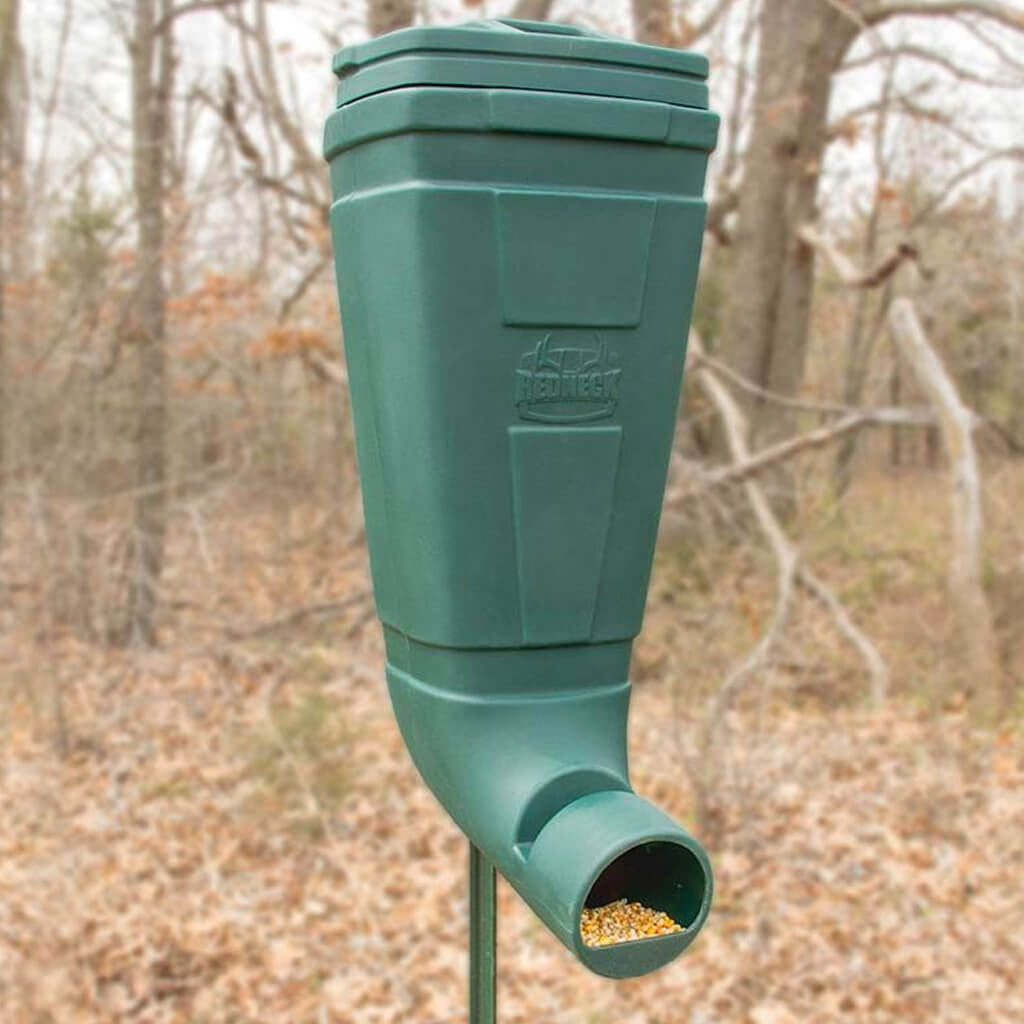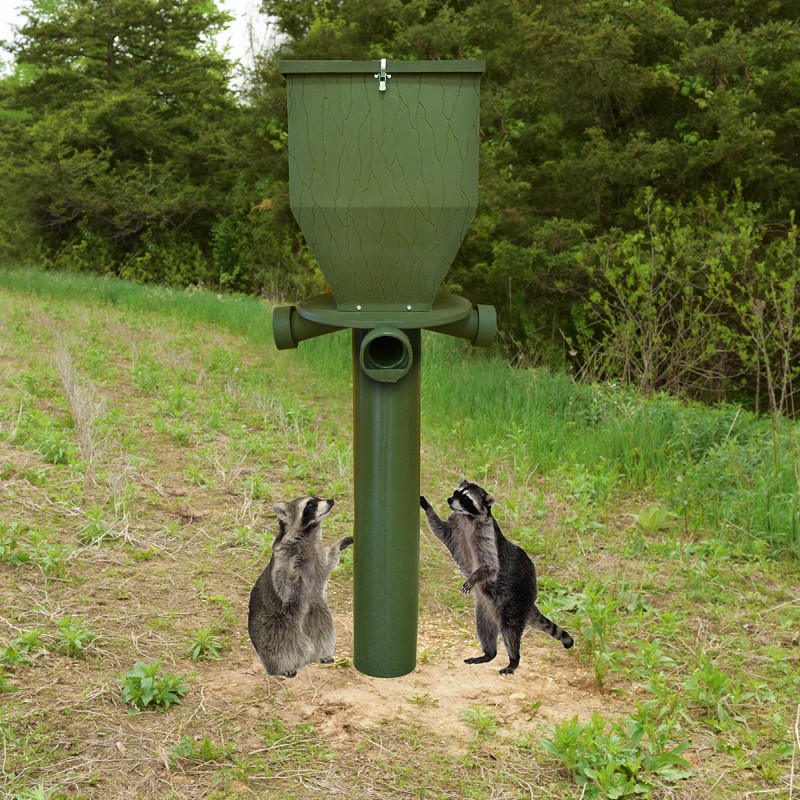FeedThatGame.com Deer Feeding Fundamentals: From Food Plots to Supplemental Feeds
Wiki Article
The Ultimate Guide to Picking and Establishing a Deer Feeder: Enhancing Wild Animals Observation and Conservation
Are you curious about improving your wild animals monitoring and preservation initiatives? Look no more! This supreme guide will walk you via the procedure of establishing and selecting up a deer feeder. You'll discover regarding the factors to consider, various kinds of feeders, and necessary materials needed. With our step-by-step overview, you'll have your deer feeder installed quickly. Get ready to develop a sanctuary for wildlife and enjoy the beauty of nature up close.Aspects to Consider When Selecting a Deer Feeder
When choosing a deer feeder, you need to take into consideration several variables to ensure its performance in bring in and feeding deer. You need to assume about the type of feeder you want to use. There are different alternatives available, including gravity feeders, spin feeders, and trough feeders. Each type has its very own advantages and downsides, so it's vital to select one that fits your particular demands and choices.One more element to take into consideration is the capability of the feeder (feedthatgame.com). You desire to see to it that it can hold sufficient food to sustain the deer population in your location. If you reside in an area with a huge deer populace, you might need a feeder with a bigger capacity to avoid constant refilling.
In addition, you should assume about the toughness of the feeder. It ought to be able to hold up against the elements and the rough habits of deer. Look for feeders made from tough products that can endure extreme weather conditions.
Finally, think about the place of the feeder. It must be put in an area that is conveniently obtainable to deer but not quickly available to other pets or killers. It's also crucial to position the feeder in a secluded and peaceful area to lessen disruption.
Kinds of Deer Feeders and Their Cons and pros
To even more discover the various alternatives offered, let's look into the kinds of deer feeders and their cons and pros. There are a number of sorts of deer feeders that you can select from, each with its very own advantages and drawbacks.One preferred kind of deer feeder is the gravity feeder. These feeders work by depending on the force of gravity to give the feed.
One more option is the spin-cast feeder. These feeders make use of an electric motor to throw the feed in a 360-degree pattern. They are great for attracting deer from a range and are highly flexible. They call for routine upkeep and can be more pricey contrasted to other kinds of feeders.
If you like an even more regulated feeding strategy, a trough feeder could be the ideal option for you. These feeders have a narrow trough that enables controlled feeding and protects against waste. They are likewise easy to fill up and maintain. They may not be suitable for areas with high deer populaces, as they can get overcrowded.
Tube feeders are one more alternative to think about. These feeders have a round design that permits deer to feed from numerous ports. They are long lasting and can hold a big amount of feed. They can be challenging Learn More to tidy and may call for regular refilling.
Important Materials for Establishing Up a Deer Feeder
After taking into consideration the types of deer feeders and their disadvantages and pros, currently let's focus on the important products you will need to establish up your deer feeder. There are various types available, consisting of tripod feeders, gravity feeders, and spin feeders. By having these necessary supplies, you will be well-prepared to set up your deer feeder and improve your wild animals observation and conservation initiatives.Step-by-Step Guide to Installing a Deer Feeder
To install a deer feeder, gather all the necessary supplies and select an ideal location. Initially, make certain you have the adhering to products: a deer feeder, a feeder timer, a feeder electric motor, a feeder battery, a photovoltaic panel (optional), and deer feed. When you have everything prepared, it's time to locate the excellent place for your feeder.Look for a location with sufficient open space for deer to conveniently approach and feed. It needs to be conveniently accessible, preferably near a water resource or cover for the deer to pull back to. Prevent placing the feeder also near human dwellings or high traffic locations to avoid disturbance or disruption to the deer.
Following, you'll require to protect the feeder to a sturdy tree or post. Usage straps or chains to connect it firmly, guaranteeing it won't be quickly knocked over by aggressive animals or strong winds. Ensure the feeder is at a height that allows very easy accessibility for deer, yet additionally keeps it out of reach from other wildlife.

Best Practices for Wildlife Observation and Conservation With a Deer Feeder

An additional vital practice is to give a variety of food options in your feeder. Deer have a varied diet regimen, so offering a mix of fruits, grains, and veggies will certainly bring in a wider variety of wildlife and advertise a healthier ecosystem. Furthermore, it is important to routinely tidy and maintain your feeder to avoid the spread of conditions among the pets.
To even more enhance wild animals monitoring and conservation, consider installing a motion-activated camera near your feeder. This will certainly allow you to keep an eye on the activity and actions of the pets, and offer valuable understandings for research study and conservation efforts.
Last but not least, it is necessary to keep in mind that a deer feeder ought to supplement, not change, the natural environment and food sources for wildlife. It needs to be watched as an additional tool for wildlife conservation, as opposed to a single source of sustenance. By adhering to these ideal methods, you can create a sustainable and secure atmosphere for wildlife monitoring and preservation with your deer feeder.
Conclusion
So there you have it, the utmost guide to selecting and establishing up a deer feeder. By taking into consideration factors like location, feed kind, and spending plan, you can choose the ideal feeder for your needs. Whether you go with a gravity feeder or a spin-cast feeder, make certain to comply with the step-by-step overview for setup. With correct upkeep and monitoring, you can boost wild animals monitoring and add to the conservation of deer populations. Delighted feeding!There are numerous alternatives available, including gravity feeders, rotate feeders, and trough feeders.One popular type of deer feeder is the gravity feeder.After taking into consideration the kinds of deer about his feeders and their pros and cons, now allow's focus on the crucial materials you will certainly require to establish up your deer feeder. There are different kinds available, including tripod feeders, gravity feeders, and rotate feeders. Make certain you have the following products: a deer feeder, a feeder timer, a feeder motor, a feeder battery, a solar panel (optional), and deer feed.
Report this wiki page